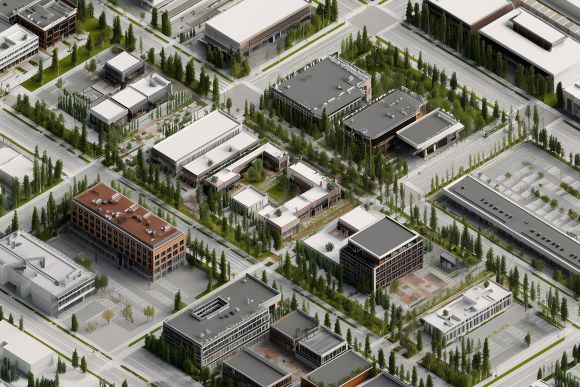Foot traffic analytics has become an essential tool for brick-and-mortar businesses in the United States, enabling them to make data-driven decisions and better understand customer behavior. As retailers and real estate professionals seek ways to stay competitive in an increasingly digital world, the ability to analyze and act on physical location data offers a significant advantage. In this guide, we explore what foot traffic analytics is, why it matters, and how it can drive business growth through actionable insights.
Understanding Foot Traffic Analytics
Foot traffic analytics is the practice of using data to understand how people interact with physical locations—whether retail stores, restaurants, or event venues. At its most basic, this form of analysis helps quantify how many people visit a location and how those visits fluctuate over time. However, in today’s competitive landscape, simply knowing how many people walk through the door is not enough.
Modern foot traffic analytics goes beyond volume tracking to support strategic business decisions through additional insights. In addition to tracking visit volume, GPS-based foot traffic data captures:
- Where visitors originated
- How frequently they return
- Which other businesses they visit before and after
- How long they stay in a location
- How those behaviors shift over time
This enables brands to evaluate the impact of marketing campaigns, identify shifting consumer behaviors, compare performance across multiple locations, and anticipate future demand. Whether you're planning a store opening, launching a promotion, or adjusting operating hours, foot traffic analytics helps ensure those decisions are rooted in reality—not guesswork.
Mobile-based foot traffic analytics has become the standard for gaining strategic visibility. Derived from anonymized GPS signals from mobile devices, this method reveals real-world movement patterns that span well beyond the store itself. It allows marketers, analysts, and real estate teams to zoom out and understand not only where consumers go, but who they are in terms of consumer profile, where they came from, and what else they’re doing before and after a visit. That context is what transforms data into decisions.
What Is Foot Traffic Data?
Foot traffic data refers to the signals and patterns generated by people visiting physical locations. While there are several technologies available to track movement—such as infrared door counters, in-store cameras, Wi-Fi pings, and Bluetooth beacons—this blog focuses on the type of data that offers the most strategic insight: anonymized and aggregated mobile GPS data.
GPS-based foot traffic data is collected from opted-in mobile devices and reflects real-world consumer behavior. It allows businesses to track where visitors come from, how frequently they return, how they interact with nearby businesses, and what broader movement patterns reveal about their habits. Unlike other methods that are limited to monitoring activity inside a single location, GPS data captures the full customer journey. This includes pre-visit behaviors (such as visiting a competitor), in-visit engagement (based on dwell time), and post-visit trends (like visiting another location nearby).
Because it is collected continuously and at scale, this type of data enables longitudinal analysis and benchmarking across markets. It empowers companies to identify high-volume trade areas, validate expansion plans, refine audience targeting, and understand how foot traffic contributes to revenue performance. And when the behavioral signals from GPS data are blended with demographic and psychographic profiles of the actual visitors, not just the people who live nearby, it becomes a powerful tool for unlocking who customers truly are and how to reach them.
Related: How Mobile GPS Data Can Take You Where You Want to Go
The Role of Foot Traffic Analytics in Business Growth
Mobile-based foot traffic analytics offers a unique lens into how consumers engage with physical spaces. Unlike traditional measurement tools that only capture in-store activity, mobile-derived analytics provide visibility into consumer behavior before and after a visit, allowing brands to uncover the "why" behind the "what."
Smarter Real Estate Strategy
For real estate and development teams, foot traffic analytics helps validate site opportunities by revealing not just the volume of visitors to an area, but also the quality of those visits. Businesses can compare visitor profiles across locations to determine whether a shopping center or corridor attracts their target audience. This leads to better site selection, fewer costly missteps, and greater long-term store performance. Brands can also study competitive footfall to identify potential threats or co-tenancy opportunities.
Marketing That Connects
Foot traffic data can also transform how marketing teams evaluate performance. By tracking mobile device activity, marketers can see when and where visits increased in response to a campaign. This makes it easier to assess whether a paid media effort drove actual store visits, not just clicks or impressions. Beyond attribution, mobile data reveals the top ZIP codes visitors are coming from and the profile of visitors, providing powerful input for campaign targeting, creative personalization, and budget allocation.
Operational Alignment and Planning
When businesses understand peak visit times, dwell duration, and frequency of visits, they can optimize store operations accordingly. This includes aligning staff schedules with high-traffic periods and planning inventory to support forecasted demand. GPS-based traffic insights bring real-world behavioral patterns into planning conversations, eliminating guesswork.
Competitive and Market Benchmarking
Foot traffic analytics enables businesses to benchmark their traffic against surrounding businesses. If a competitor’s location is drawing significantly more visits from shared audience segments, that’s a sign to reevaluate local outreach or product assortment. On the flip side, businesses can use strong traffic trends to support lease renegotiations or expansion proposals.
Real Results, Real ROI
Ultimately, foot traffic analytics equips brands with the insight to make faster, more confident decisions. Whether assessing trade area reach, validating a marketing campaign, or supporting a capital investment, the context provided by GPS-derived traffic trends strengthens business outcomes. According to World Metrics (2024), retailers using foot traffic data to support location and marketing decisions have reported up to a 20% increase in conversion rates, underscoring its measurable impact.
Key Benefits of Foot Traffic Measurement
When powered by anonymized and aggregated mobile device data, foot traffic measurement delivers more than basic visit counts. It becomes a lens through which businesses can understand evolving consumer behavior, benchmark performance, and support smarter decisions across the organization. The strategic advantage lies not just in knowing how many people visit, but in understanding who they are in terms of consumer profile, where they came from, and how their behaviors shift over time.
One key benefit is the ability to track visit trends at scale. Businesses can observe how traffic changes by daypart, season, or promotional period, helping them time marketing campaigns, staff schedules, or inventory restocks with greater accuracy. Unlike traditional methods that are limited to point-in-time views, mobile-based analytics provide continuous visibility into foot traffic patterns.
Mobile foot traffic data also strengthens decision-making by adding behavioral context. Businesses can determine whether store visitors align with their target audience, assess whether a campaign is attracting new or returning customers, and identify trade areas that warrant deeper investment. When behavioral signals from GPS data are blended with demographic and psychographic profiles of actual visitors—not just residents of a trade area—foot traffic becomes a tool not just for measurement, but for understanding the motivations, preferences, and engagement patterns of your core audience.
These benefits aren’t limited to one department. Marketing, real estate, strategy, and operations teams all gain from using mobile foot traffic analytics to align their efforts with actual consumer activity. The end result is better-coordinated strategies, fewer blind spots, and more confident business moves.
How to Measure Foot Traffic in Store
Measuring foot traffic through anonymized and aggregated mobile device data has become the most strategic approach for brands looking to understand real-world customer behavior. Unlike legacy methods like door counters or in-store sensors, which provide a limited and siloed view, mobile GPS data captures the broader customer journey—offering insights into not only how many people visit a location, but who they are in terms of consumer profile, where they came from, how often they return, and where else they go.
This type of data is collected from opted-in mobile devices via apps, geofenced to specific geographic boundaries like a store, shopping center, or competitor site. Once a device enters or exits a defined area, that interaction is captured as a signal. But signal collection is just the beginning. The real value lies in how that data is processed. At Buxton, GPS signals are rigorously filtered, cleansed, and verified to ensure accuracy, eliminate noise, and provide only the most reliable information.
With this foundation in place, businesses can layer on additional insights like demographics, psychographics, and trade area dynamics to uncover the full story behind each visit. Blending this data, rather than just layering it, to define the visitor profile provides an even richer insight into who the customer is. This allows you to distinguish between casual browsers and loyal customers, understand how marketing or environmental changes impact behavior, and benchmark traffic across time and competitive locations.
Just as important as the insights themselves is the way the data is handled. Buxton ensures that all GPS-derived traffic data is fully compliant with privacy laws such as GDPR and CCPA. Every data point is anonymized and aggregated, with no personally identifiable information ever exposed. This commitment to clean, trustworthy data is what enables businesses to make bold decisions with confidence. To explore best practices in mobile data collection and security, review Buxton’s Security Statement.
Related: Clean Mobile Data Leads to Trustworthy Insights.
Utilizing Foot Traffic Maps
Foot traffic maps generated from anonymized mobile device data offer a powerful way to visualize how visitors interact with physical locations across space and time. Unlike heatmaps created from in-store sensors or Wi-Fi pings, GPS-based maps illustrate where visitors originate, where else they stop before and after visiting a location, and how visit trends change over days, weeks, or seasons.
These maps are often built from aggregated GPS signals geofenced to a specific area—like a shopping center, clinic, or competitor location—and displayed as visual layers that show concentration, flow, and visitor volume over time. Businesses can identify which trade areas contribute the most foot traffic, determine the draw of a location relative to nearby competitors, and assess how external events or campaigns affect overall reach.
Mobile foot traffic maps are especially valuable for benchmarking. Whether you're comparing traffic between markets or monitoring changes over time, visualizing the geographic origin of your visitors helps validate site potential, understand gaps in coverage, and spot new opportunities. This is particularly useful when layered with other datasets, such as demographics, psychographics, or store performance metrics.
Exploring Foot Traffic Data Providers
There are several providers in the foot traffic analytics space, each offering different strengths depending on the depth of insights and use cases required.
- SafeGraph is primarily a data provider rather than a full analytics platform. It delivers raw point-of-interest and mobility datasets designed for integration into custom models, making it a preferred choice for researchers and data science teams building proprietary solutions.
- Placer.ai provides an intuitive location intelligence platform with insights derived from GPS data. It offers traffic trends, competitive benchmarking, and user-friendly dashboards, making it a strong fit for businesses that need accessible analytics to support quick decision-making.
- Buxton also offers a location intelligence platform with foot traffic insights but goes a step further by blending psychographic data with the traffic data to create anonymized, aggregated visitor profiles. This added context enables a deeper understanding of who your visitors are, what likely motivates them, and how to reach them. Buxton’s platform supports use cases across marketing, real estate, operations, and strategic planning by combining location intelligence with consumer segmentation.
When selecting a foot traffic provider, it's important to evaluate how data is sourced and cleansed, how often it’s updated, and whether the platform supports deeper insights—like trade area analysis or visitor profiles. Businesses should prioritize solutions that deliver clean, contextualized data, integrate with existing tools, and support scalable decision-making across departments.
Industry Use Cases: Foot Traffic Analytics in Action
Foot traffic analytics empowers organizations across industries to make better, faster decisions rooted in real-world consumer behavior. Here’s how several sectors are applying GPS-based foot traffic analytics to enhance strategy and performance.
Retail
Retailers use foot traffic to evaluate trade area reach, measure campaign effectiveness, and validate real estate decisions. For example, a retail chain planning new stores might compare visitor profiles at potential locations to see which one attracts its core audience. Foot traffic trends also help brands identify shifting consumer patterns that may impact merchandising or promotional strategies.
Restaurants
In the restaurant industry, mobility data helps teams monitor visitation trends and assess the success of service changes, like the introduction of curbside pickup or delivery. By comparing foot traffic volume before and after operational changes, restaurant groups can make informed adjustments that align with customer preferences. They can also use visitor origin data to refine local store marketing and identify expansion opportunities.
Hospitality
Hotel groups use foot traffic insights to understand how major events influence surrounding traffic and demand. By analyzing visit trends around arenas, convention centers, and entertainment districts, they can optimize staffing and identify the best times to run promotions or loyalty campaigns.
The Future of Foot Traffic Analytics
Foot traffic analytics continues to grow in importance as businesses seek to better understand customer behavior in physical environments. As data sources grow more sophisticated and tools more user-friendly, businesses of all sizes have access to insights that were once only available to enterprise-level players.
As you consider integrating foot traffic analytics into your strategy, look for solutions that offer flexibility, privacy, and actionable insights. Buxton’s Mobilytics, for example, provides an intuitive platform for studying movement patterns, visitor profiles, and trade areas—without requiring you to bring your own data.
From marketing teams refining campaigns to real estate leaders evaluating site potential, foot traffic analytics delivers the context necessary to make confident, forward-thinking decisions.
Explore Buxton's foot traffic analysis product.


